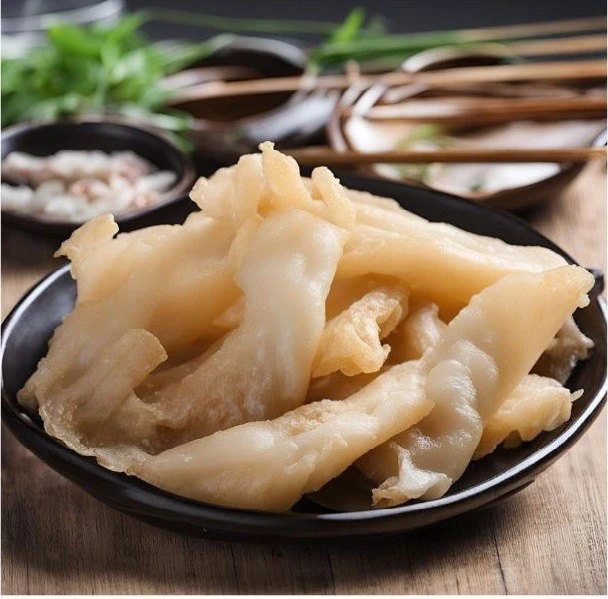
Fish maw, an underrated gem in the culinary world, is gaining popularity for its nutritional benefits and unique texture. Revered in Asian cuisines, especially Chinese, fish maw is not just a delicacy but also a symbol of prosperity and health. This article delves into what fish maw is, its culinary uses, health benefits, and offers a detailed guide on preparing the beloved fish maw soup.
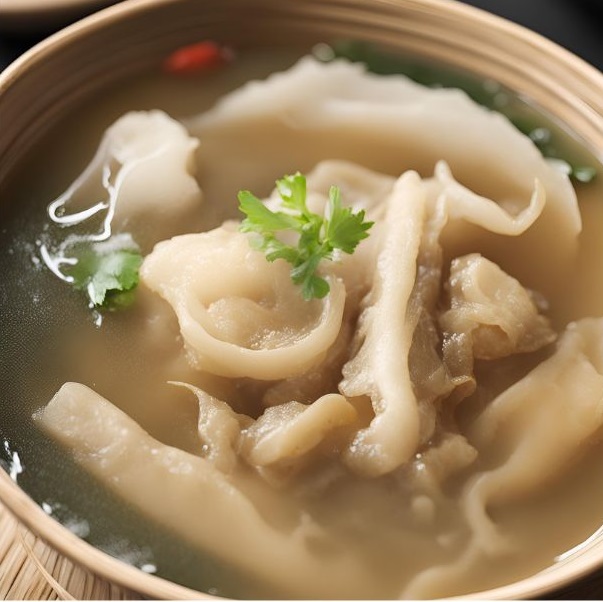
What is Fish Maw?
Fish maw refers to the dried swim bladders of fish, commonly sturgeon or croaker. This organ helps fish maintain buoyancy in water. Once dried, it transforms into a prized ingredient known for its delicate texture and ability to absorb flavors.
Types of Fish Maw:
- Premium Fish Maw: Typically from larger fish, valued for its size and thickness.
- Regular Fish Maw: From smaller fish, more affordable and commonly used in everyday cooking.
Nutritional Value and Health Benefits: Fish maw is highly regarded for its nutritional profile:
- High in Protein: Essential for muscle repair and growth.
- Rich in Collagen: Beneficial for skin elasticity and joint health.
- Low in Fat: A healthy addition to any diet.
Culinary Uses of Fish Maw
Fish maw has a long-standing place in traditional Chinese cuisine, celebrated during special occasions such as Lunar New Year. It is versatile and can be incorporated into various dishes.
Popular Dishes Using Fish Maw:
- Fish Maw Soup: A staple in many households and restaurants.
- Braised Fish Maw: Often prepared with abalone or mushrooms.
- Fish Maw with Vegetables: A lighter, healthier option.
In modern cuisine, chefs are experimenting with fish maw, incorporating it into fusion dishes that blend traditional and contemporary flavors.
Health Benefits of Fish Maw
Fish maw is not only a culinary delight but also a powerhouse of health benefits. It is particularly valued for its high collagen content, which is beneficial for maintaining youthful skin and healthy joints. The protein content supports muscle growth and repair, while its low-fat nature makes it suitable for various diets, including those aimed at weight management.
Specific Health Benefits:
- Skin Health: Collagen helps maintain skin elasticity and reduces wrinkles.
- Joint Health: Collagen supports cartilage health, reducing joint pain and stiffness.
- Overall Wellbeing: Protein is vital for body repair and energy.
Origin and History: The soup has its roots in Chinese imperial cuisine, where it was a symbol of luxury. Over time, it has become a household favorite, celebrated for its simplicity and elegance.
Traditional Recipes and Variations:
- Classic Fish Maw Soup: Typically includes chicken broth, fish maw, and mushrooms.
- Modern Variations: May include seafood like shrimp or crab, and additional herbs for flavor.
Ingredients and Preparation Methods:
- Basic Ingredients: Fish maw, chicken or pork broth, shiitake mushrooms, ginger, and sometimes dried scallops or seafood.
- Preparation Methods: Soaking the fish maw, simmering the broth, and slowly combining all ingredients to infuse flavors.
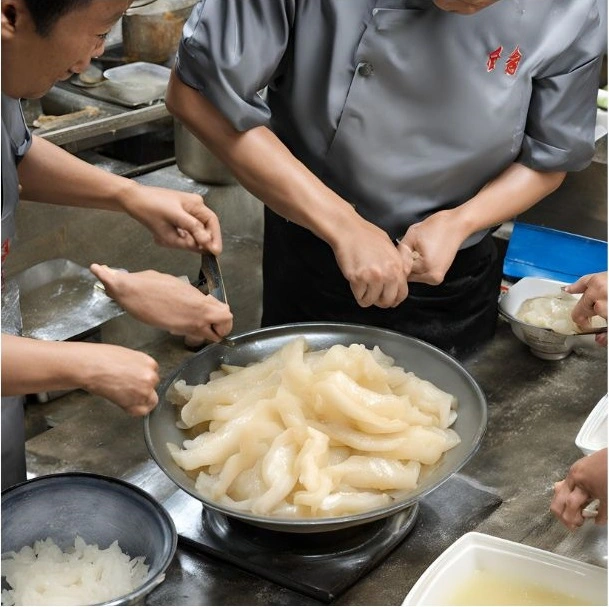
How to Prepare Fish Maw Soup
Here is a detailed recipe to prepare a traditional fish maw soup at home.
Ingredients:
- 100g dried fish maw
- 1 liter chicken broth
- 5 dried shiitake mushrooms, soaked and sliced
- 2 slices of ginger
- 1 tbsp cooking wine
- Salt and pepper to taste
- Optional: dried scallops, crab meat, or shrimp
Preparation Steps:
- Soak Fish Maw: Rinse and soak the dried fish maw in cold water for 8-12 hours, or until it becomes soft.
- Prepare Broth: In a large pot, bring the chicken broth to a boil.
- Cook Fish Maw: Drain the soaked fish maw and cut it into bite-sized pieces. Add to the boiling broth along with ginger slices and cooking wine.
- Add Mushrooms: Stir in the soaked and sliced shiitake mushrooms.
- Simmer: Reduce heat and let the soup simmer for 30-40 minutes, allowing the flavors to meld.
- Season: Add salt and pepper to taste. Optional ingredients like dried scallops or seafood can be added at this stage.
- Serve: Garnish with chopped green onions or cilantro if desired, and serve hot.
Tips for Cooking with Fish Maw
Selecting and Storing Fish Maw:
- Choose fish maw that is light in color and has a firm texture.
- Store in a cool, dry place or refrigerate for longer shelf life.
Rehydration Process:
- Proper soaking is crucial to achieve the right texture. Ensure it is fully rehydrated before cooking.
Pairing Fish Maw with Other Ingredients:
- Fish maw pairs well with delicate flavors such as chicken, seafood, and mild herbs.
- Avoid overpowering spices that can mask its subtle taste.
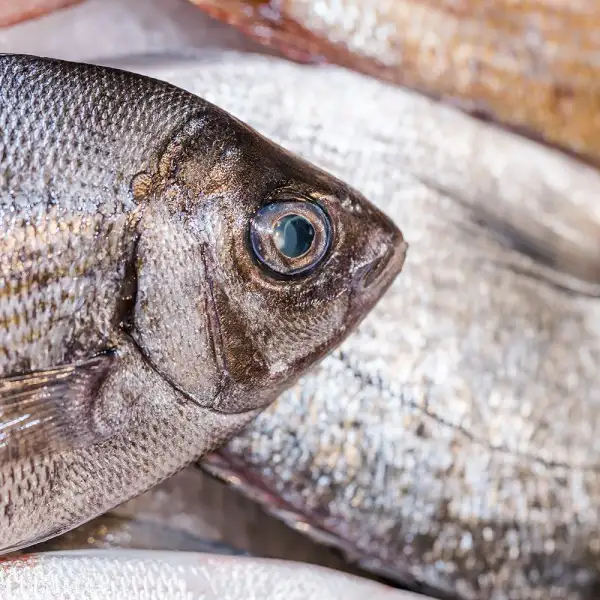
How Fish Maw Made
The process begins with the harvesting of the swim bladders from specific fish species, commonly sturgeon or croaker. These fish are carefully selected for their size and the quality of their swim bladders, which are known for their excellent texture when dried.
- Selection of Fish:
- Only high-quality fish with intact swim bladders are chosen.
- The fish are usually caught in clean, uncontaminated waters to ensure the purity of the fish maw.
- Extraction of Swim Bladders:
- The swim bladders are carefully removed from the fish.
- This is done by skilled workers who ensure that the bladders are extracted without damage.
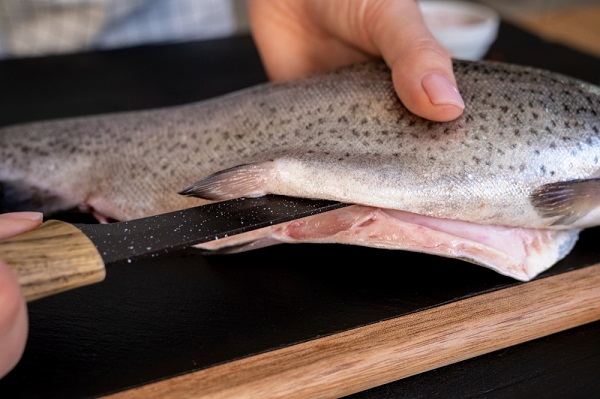
Cleaning and Preparation
Once the swim bladders are harvested, they undergo a thorough cleaning process to remove any impurities and residual tissues. This step is essential for ensuring the high quality and safety of the fish maw.
- Initial Cleaning:
- The swim bladders are washed multiple times in clean water.
- Any remaining blood, fat, or connective tissue is meticulously removed.
- Blanching:
- The cleaned swim bladders are briefly blanched in hot water.
- This process helps to firm up the texture and further cleanse the bladders.
Drying Process
Drying is a crucial step in the preparation of fish maw, as it preserves the product and concentrates its nutritional benefits. There are two main methods for drying fish maw: air drying and sun drying.
- Air Drying:
- The blanched swim bladders are hung in a well-ventilated, shaded area.
- Air drying is a slower process but helps retain the delicate flavor and nutritional content.
- Sun Drying:
- In some regions, sun drying is preferred for its efficiency.
- The swim bladders are laid out in direct sunlight on clean drying racks.
- This method requires careful monitoring to avoid overexposure, which can affect the texture.
Grading and Packaging
After drying, the fish maw is graded based on its quality, size, and appearance. Higher grades are thicker and more uniform, while lower grades may have slight variations in color or thickness.
- Grading:
- Fish maw is sorted into different grades, with the best quality being light in color and uniformly thick.
- Lower grades are still valuable but might be used for different culinary purposes.
- Packaging:
- The dried fish maw is packaged in airtight containers to protect it from moisture and contamination.
- Proper packaging ensures a longer shelf life and maintains the quality of the product.
Rehydration and Culinary Use
Before fish maw can be used in cooking, it needs to be rehydrated. This process involves soaking the dried fish maw in water until it regains its soft, pliable texture.
- Soaking:
- Fish maw is soaked in cold water for 8-12 hours, or overnight.
- For quicker rehydration, it can be soaked in warm water, but this may slightly alter the texture.
- Additional Preparation:
- After soaking, the fish maw can be further cleaned and cut into desired shapes.
- It is then ready to be used in various recipes, such as soups, stews, and braised dishes.
Top Fish Maw Providers in the Market
Fish maw, a highly sought-after ingredient in many Asian cuisines, has a robust market with several key providers known for their quality and reliability. Here, we highlight some of the top fish maw providers, their ratings, and their popularity among customers.
- Tong Kee Seafood
Tong Kee Seafood is a renowned supplier of premium seafood products, including high-quality fish maw. They have built a strong reputation in the market for their dedication to quality and customer satisfaction.
- Quality and Selection:
- Tong Kee offers a variety of fish maw types, including premium grades sourced from reputable fisheries.
- They are known for their strict quality control processes, ensuring that only the best products reach customers.
- Ratings and Popularity:
- Customer Rating: 4.8/5
- Popularity: Widely popular among culinary enthusiasts and professional chefs for their consistent quality and exceptional service.
- Customer Feedback: Customers praise Tong Kee for their fresh, well-dried fish maw that rehydrates perfectly for soups and other dishes.
- Hong Kong Gourmet Food Co.
Hong Kong Gourmet Food Co. specializes in traditional Chinese delicacies, with fish maw being one of their flagship products. They cater to both retail and wholesale markets, ensuring a wide distribution network.
- Quality and Selection:
- They offer both air-dried and sun-dried fish maw, catering to different culinary preferences.
- Their products are known for their thick, uniform pieces that are free from impurities.
- Ratings and Popularity:
- Customer Rating: 4.6/5
- Popularity: A favorite among health-conscious consumers and those looking for high-quality traditional ingredients.
- Customer Feedback: Many customers appreciate the natural drying process and the rich flavor of their fish maw.
- Dragon Chef Delicacies
Dragon Chef Delicacies has made a name for itself by providing gourmet seafood products, including fish maw. They are well-regarded for their commitment to sustainable sourcing and premium quality.
- Quality and Selection:
- Their fish maw is sourced from pristine waters and processed under strict hygienic conditions.
- They offer a range of products from regular to premium grades, suitable for various culinary needs.
- Ratings and Popularity:
- Customer Rating: 4.7/5
- Popularity: Popular among both home cooks and high-end restaurants, known for their reliable supply and top-notch quality.
- Customer Feedback: Customers commend Dragon Chef for their excellent packaging and the superior texture of their fish maw.
- Yue Hwa Chinese Products
Yue Hwa is a well-established provider of Chinese delicacies, including a wide range of fish maw products. Their long-standing presence in the market has made them a trusted name among consumers.
- Quality and Selection:
- They provide a diverse selection of fish maw, including both dried and ready-to-cook options.
- Yue Hwa is known for maintaining high standards in sourcing and processing their products.
- Ratings and Popularity:
- Customer Rating: 4.5/5
- Popularity: A popular choice among traditionalists who value authenticity and heritage in their ingredients.
- Customer Feedback: Customers appreciate the traditional preparation methods and the rich history behind the brand.
- Fisherman’s Market
Fisherman’s Market offers a comprehensive range of seafood products, with fish maw being one of their standout offerings. They focus on providing high-quality, sustainable seafood options to their customers.
- Quality and Selection:
- Their fish maw is carefully selected and processed to meet high standards of quality and safety.
- They offer competitive pricing without compromising on quality, making them a popular choice for bulk purchases.
- Ratings and Popularity:
- Customer Rating: 4.6/5
- Popularity: Well-regarded among both budget-conscious shoppers and gourmet chefs for their value-for-money offerings.
- Customer Feedback: Customers often highlight the excellent value and reliable quality of Fisherman’s Market fish maw.
Diving into the world of fish maw is akin to discovering a hidden gem in the culinary sea. Its value extends beyond being just a swim bladder, touching the realms of taste, texture, and nutritional goodness. Understanding how to select and prepare fish maw can turn any dinner into an exotic feast, proving that this delicacy is worth every bit of effort.
Incorporating fish maw into your cooking repertoire opens up a Pandora’s box of flavors and textures. Whether you’re simmering it in a rich, hearty soup or stir-frying it for a quick, flavorful dish, the versatility of fish maw is unmatched. It’s not just about the unique taste; it’s about embracing an ingredient that has been cherished across cultures, particularly in Chinese cuisine, for generations.
Question may asked
What is fish maw?
Fish maw is the dried swim bladder of large fish, a delicacy in many cuisines, particularly Chinese. It’s valued for its texture, taste, and nutritional benefits.
How do you select high-quality fish maw?
Look for ones with a pale, golden color, uniform thickness, and firm texture. Avoid any that appear overly dry or have an unnatural color.
Why is soaking important before cooking fish maw?
Soaking rehydrates the fish maw, making it soft and pliable, ready for cooking. Skipping this step can result in a tough and unpleasant texture.
Can fish maw be used in vegetarian dishes?
Absolutely! While fish maw itself is not vegetarian, it can be added to vegetable broths and stir-fries for an added boost of texture and nutrients, assuming dietary preferences allow for fish products.
Is fish maw healthy?
Yes, fish maw is high in protein and low in fat. It contains beneficial nutrients like collagen, making it a healthy addition to various dishes.
- SEO Powered Content & PR Distribution. Get Amplified Today.
- PlatoData.Network Vertical Generative Ai. Empower Yourself. Access Here.
- PlatoAiStream. Web3 Intelligence. Knowledge Amplified. Access Here.
- PlatoESG. Carbon, CleanTech, Energy, Environment, Solar, Waste Management. Access Here.
- PlatoHealth. Biotech and Clinical Trials Intelligence. Access Here.
- Source: https://www.theenvironmentalblog.org/2024/06/fish-maw/
